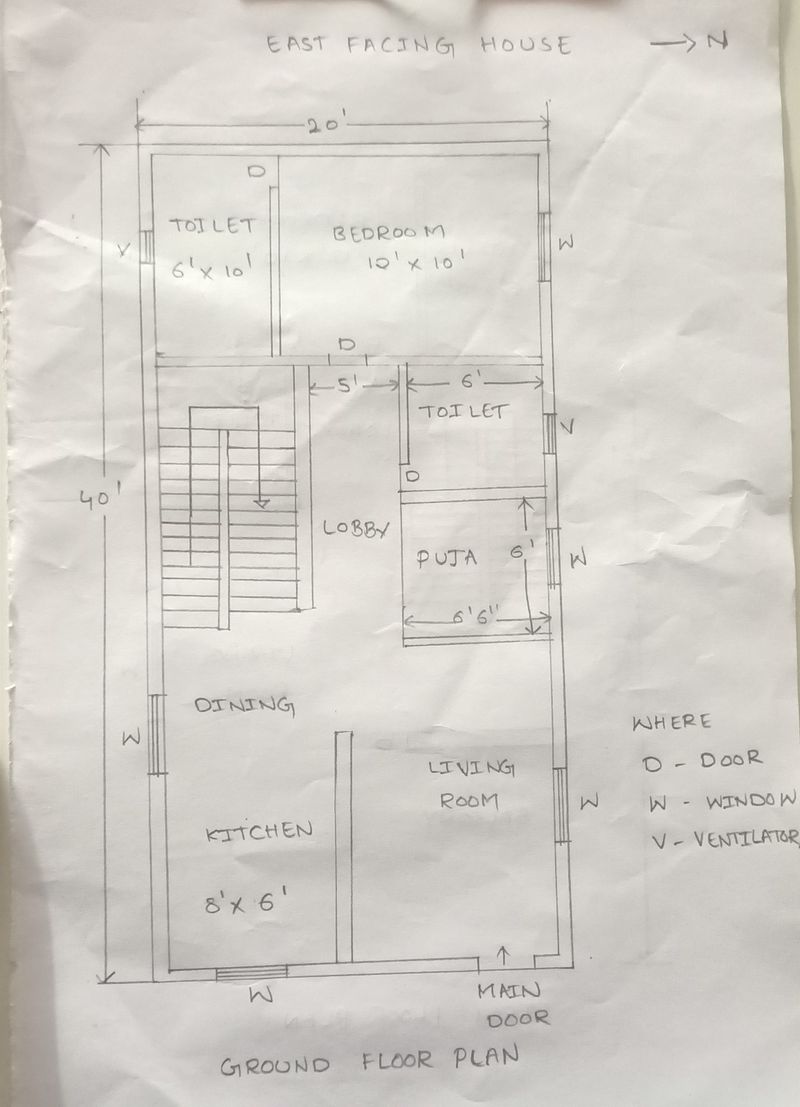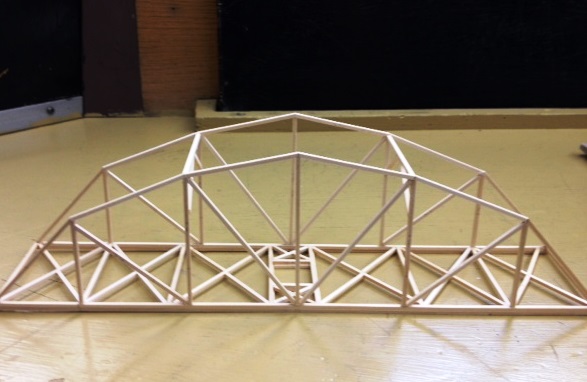Courses by Software
Courses by Semester
Courses by Domain
Tool-focused Courses
Machine learning
POPULAR COURSES
Success Stories
Sketch a G+1 residential plan according to Vaastu Shastra and Calculation of Loads as per IS code
AIM: To sketch a G+1 floor residential plan, according to Vaastu Shastra, and list down the names of the structural drawings required to be provided to the site for construction. Vaastu Shastra: Vaastu Shastra is the ancient Indian science of architecture and acts as a guideline to design your home in…
SAI ROOPA MULAKALA
updated on 08 Jun 2022
- AIM:
To sketch a G+1 floor residential plan, according to Vaastu Shastra, and list down the names of the structural drawings required to be provided to the site for construction.
Vaastu Shastra:
- Vaastu Shastra is the ancient Indian science of architecture and acts as a guideline to design your home in the way that enhances positive energy
- Our nature is abundant with powerhouses of energy sources like sun, wind, moon, water, earth and fire
- Effect of sunrays, flow of winds, pull of earth magnetic field and other such cosmic energies
- A good home needs to radiate the right kind of energy
- A person dwelling in a house comes under the influence of a specific energy field which comes under the influence of specific energy field
- Architectural changes are not possible for a ready to move in house
Significance of Eight directions:
- Four cardinal direction North, South, East and West
- Four intercardinal direction North-East, North-West, South-East and South-West
- Each direction signifies an aspect of life and is governed by various gods
- North – Wealth, South- Dharma
- East and West – Overall prosperity
Basic principles of Vastu Shastra:
- Shape: rooms should be preferably be square or rectangle
- Room basics: rooms should be airy, well lit, bright and clean
- Home center: center of the house should be an empty space
- Stairs and furniture: heavy furniture should be kept in the south-west direction
- Water: avoid keeping plants and water features in the bedroom
- Dining table: Dining space should be near the kitchen and not near the main door
- Mirror placement: Mirror facing the bed is strictly not allowed. Mirrors in the bedroom need to be placed in such a way that bed cannot be seen
Auspicious directions as per Vastu Shastra:
- Kitchen: south-east is the best, north-east to be avoided
- Staircase: south-west is the best, north east to be avoided
- Toilet: north-west is the best, north-east to be avoided
- Master bedroom- south-west is the best
- Guest room: north-west is the best
- Living room: north-west is the best
- Overhead tanks: west is the best
- Underground tanks: north-east is the best, south-west to be avoided
PROCEDURE:


Assumed dimensions are:
- Thickness of external walls- 0.23m
- Dimensions of each column-0.3mx0.3m
- Dimensions of each beam-0.3mx0.45m
- Height of each floor-3m
- Thickness of slab- 0.25m
- Thickness of internal walls-0.115m
- Dimensions of internal doors-1.4mx2m
- Dimensions of main door-1.5mx2.5m
- Dimensions of window in living room- 3mx1.5m
- Dimension of window in bedroom- 1mx1.5m
- Dimensions of ventilator in bathroom- 0.5mx0.3m
Load calculations:
Dead Load-
Columns:
Dead load = Volume of each material x unit weight of specific material
The height of column from ground = slab thicknessx2 + height of each floor x 2
= 0.25 x 2 + 3 x 2
= 6.5m
Size of column-0.3mx0.3m
The volume of each column is 0.3 x 0.3 x 6.5 = 0.585m3
Unit weight of reinforced concrete = 25 KN/m3
Dead load due to each column = 0.585 x 25 = 14.625 KN
Beams:
Dead load of the beam = cross sectional area x unit weight of concrete
The dimensions of beam are 0.3mx0.45m
Unit weight of reinforced concrete = 25 KN/m3
Dead load due to beam = 25 x 0.3 x 0.45 = 3.375 KN/m
Walls:
Dead load of the walls = cross sectional area x unit weight of concrete
Thickness of external walls- 0.23m
Thickness of internal walls-0.115m
Height of each wall = 3m
Unit weight of brick wall = 20 KN/m3
Dead load due to external wall = 20 x 0.23 x 3 = 13.8 KN/m
Dead load due to internal wall = 20 x 0.115 x 3 = 6.9 KN/m
Slab:
Dead load of slab = Thickness x unit weight
Thickness of slab = 0.25m
Unit weight of reinforced concrete = 25 KN/m3
Dead load = 25 x 0.02 x 1 = 6.25 KN/m3
Live Load:
As per Table 1 of IS-875 part 2, live loads are:
Bedroom = 2 KN/m2
Living room = 2 KN/m2
Toilets = 2 KN/m2
Kitchen = 2 KN/m2
Staircase = 3 KN/m2
Storage = 2 KN/m2
Terrace = 2 KN/m2
Pooja room = 2 KN/m2
Wind load:
Wind loads are calculated when the height of the building exceeds 10m and the wind speed is constant if the height of the building is less than 10m.
In the given plan, the height of the building is less than 10m.
Therefore, we don't require the wind load for this building.
Structural drawings required to be provided to the site for construction:
- Setting out Plan
- Centerline Plans
- Floor Plans (Detailed with grid Dimensions i.e., Centerline Markings)
- Sections and Details
- Elevations and Finish Details
- Opening Schedules
- Trench Plan or Excavation Plan (according to Centerline Markings on Site)
- Foundation Plan
- Column Layouts
- Plinth Beam Layouts
- Roof Beam and Slab Layouts
- Mechanical Drawing
- Electrical Drawings
- Plumbing Drawings
- Fire Safety Drawings
Result:
Dead load due to each column = 14.625 KN
Dead load due to beam = 3.375 KN/m
Dead load due to external wall = 13.8 KN/m
Dead load due to internal wall = 6.9 KN/m
Dead load of slab = 6.25 KN/m3
Total area of the G+1 floor residential plan is 800 sq.ft
The house is East facing and drawn according to Vastu shastra.
Leave a comment
Thanks for choosing to leave a comment. Please keep in mind that all the comments are moderated as per our comment policy, and your email will not be published for privacy reasons. Please leave a personal & meaningful conversation.
Other comments...
Be the first to add a comment
Read more Projects by SAI ROOPA MULAKALA (23)
Week 3 Challenge
WEEK3 CHALLENGE 1. 1. State the primary load cases to be considered for design. A) The primary load cases to be considered for design are: Dead Load (IS 875: Part I). Live Load (IS 875: Part II). Wind Load (IS 875: Part III). Snow Load (IS 875: Part IV). Seismic Load (IS 1893: 2016). 2.…
11 May 2023 03:08 PM IST
Week 2 Challenge
WEEK 2 CHALLENGE INTRODUCTION: STAAD is a popular structural analysis application known for analysis, diverse applications of use, interoperability, and time-saving capabilities. STAAD helps structural engineers perform 3D structural analysis and design for both steel and concrete structures. A physical model created in…
05 Apr 2023 10:37 AM IST
Week 1 Challenge
WEEK 1 CHALLENGE INTRODUCTION: STAAD is a popular structural analysis application known for analysis, diverse applications of use, interoperability, and time-saving capabilities. STAAD helps structural engineers perform 3D structural analysis and design for both steel and concrete structures. A physical model created in…
02 Mar 2023 09:12 AM IST
Usage of Navigation tool , Timeliner and Clash Detection test using Naviswork
USAGE OF NAVIGATION TOOL, TIMELINER AND CLASH DETECTTION TEST USING NAVISWORKS INTRODUCTION: Autodesk Naviswork is a software control model for architects, engineers and building designers. The simulation software improves your Building Information Modeling (BIM) and assists you with professional workflows and design methods.…
24 Feb 2023 11:25 AM IST
Related Courses






0 Hours of Content

Skill-Lync offers industry relevant advanced engineering courses for engineering students by partnering with industry experts.
Our Company
4th Floor, BLOCK-B, Velachery - Tambaram Main Rd, Ram Nagar South, Madipakkam, Chennai, Tamil Nadu 600042.
Top Individual Courses
Top PG Programs
Skill-Lync Plus
Trending Blogs
© 2025 Skill-Lync Inc. All Rights Reserved.








